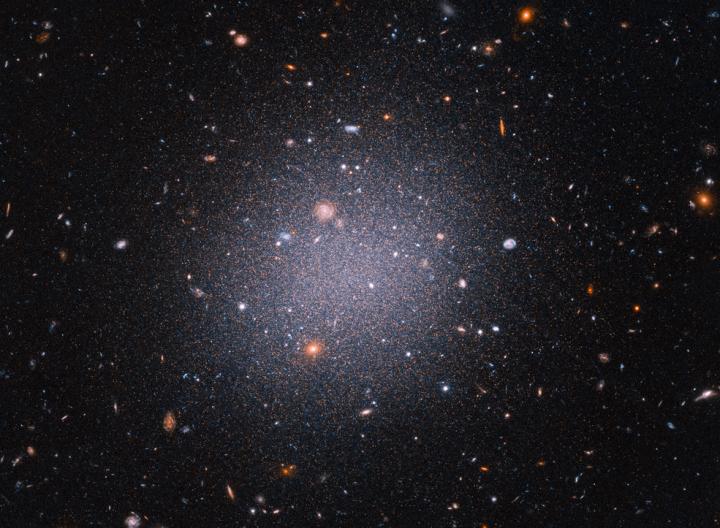Dark matter is ‘missing’ from galaxy and scientists don’t know why, new Nasa study finds

Your support helps us to tell the story
From reproductive rights to climate change to Big Tech, The Independent is on the ground when the story is developing. Whether it's investigating the financials of Elon Musk's pro-Trump PAC or producing our latest documentary, 'The A Word', which shines a light on the American women fighting for reproductive rights, we know how important it is to parse out the facts from the messaging.
At such a critical moment in US history, we need reporters on the ground. Your donation allows us to keep sending journalists to speak to both sides of the story.
The Independent is trusted by Americans across the entire political spectrum. And unlike many other quality news outlets, we choose not to lock Americans out of our reporting and analysis with paywalls. We believe quality journalism should be available to everyone, paid for by those who can afford it.
Your support makes all the difference.An unusual galaxy appears to be missing its dark matter, scientists have found.
The unusual galaxy is challenging our understanding of how they form and evolve, the researchers say after detailed new observations.
The latest study began when scientists looked deeply at a galaxy known as NGC 1052-DF2, or just DF2 for short. It is what astronomers refer to as “ultra-diffuse” – while it is comparable in width to our own Milky Way, it contains only 1/200th of the number of stars.
The galaxy is odd in other ways: it does not see to have the central region, spiralling arms or disk that are observed in many other galaxies.
And now scientists have confirmed what might be the most unusual part of the already strange galaxy. It seems to lack dark matter, which until now was understood as the necessary glue that helps galaxies form, holds them together and makes up the bulk of the universe.
Researchers first reported the strange galaxy and its missing dark matter in 2018. But to verify the original findings, they took another look at the galaxy and tried to replicate their findings, as well as see whether it is really inexplicable.
“We went out on a limb with our initial Hubble observations of this galaxy in 2018,” said Pieter van Dokkum of Yale University, who led that original research. “I think people were right to question it because it’s such an unusual result. It would be nice if there were a simple explanation, like a wrong distance. But I think it’s more fun and more interesting if it actually is a weird galaxy.”
To verify the findings, researchers have to check exactly how far away the galaxy is. If it is as far from Earth as the researchers suggest, then dark matter would only make up a few per cent of its contents; some have claimed it is in fact more near, and the calculations of its dark matter are overstated.
That is because the calculations about the amount of dark matter are based on how the stars move around in the galaxy, which can be used to infer the pull of gravity within it. If it is as distant as scientists claim, then the stars make up most of its mass, and there is no space left for dark matter.
The new findings, based on observations from the Hubble Space Telescope, show that it is no only far away from Earth – it is further even than those first estimates. It is 72 million light years away – in contrast to the 42 million light years proposed by other scientists, and the 65 light years that the original research suggested.
That helps to suggest there is indeed dark matter missing from the galaxy. But that opens up another mystery: why is the galaxy so deficient in dark matter, and what does that mean for our understanding of how galaxies are formed and stick together?
“For almost every galaxy we look at, we say that we can’t see most of the mass because it’s dark matter,” van Dokkum explained. “What you see is only the tip of the iceberg with Hubble. But in this case, what you see is what you get. Hubble really shows the entire thing. That’s it. It’s not just the tip of the iceberg, it’s the whole iceberg.”
The new research is published in The Astrophysical Journal Letters.
Join our commenting forum
Join thought-provoking conversations, follow other Independent readers and see their replies
Comments